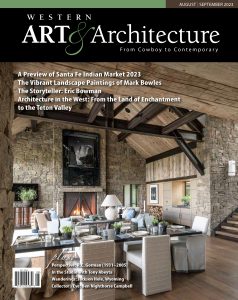The first encounter with paintings by Mark Bowles can be a bit like walking into a room that is a little too dark. It takes a while for your eyes to adjust before you can really take in what you are seeing. While they can be enjoyed at a glance, these are not paintings intended for casual viewing. Taking the time to look closely brings its rewards.
When I see Mark’s images, I am struck initially by his bold use of color. It is understood that he is a skilled colorist. Indicating multiple application techniques, the works feature layers of pigments and varying textures. The colors play off each other, often contrasting and complimenting one another within a single painting. As I take in the different color relations, this is when the compositional structure begins to assert itself. Colors, joyful as they are, are not haphazard, but are evidently guided by an underlying construction.
Recent paintings suggest vaguely familiar land masses and agrarian fields of central California, but they are clearly imaginative responses not intended to be read as literal. They balance the familiar with the highly personal. These are not landscapes in a classical sense that ask us to pinpoint a precise location. Instead, we are seeing landscapes of the mind. We are seeing Mark’s responses to his lived experience and his shifting reactions brought on by various sites over time. Looking closely at the combination of colors and forms, we are rewarded not by trying to find the specificity of place, but by connecting with the artist’s emotions and personal feelings about nature.
Jerry N. Smith, PhD – Curator of The Phoenix Art Museum, Phoenix, AZ
